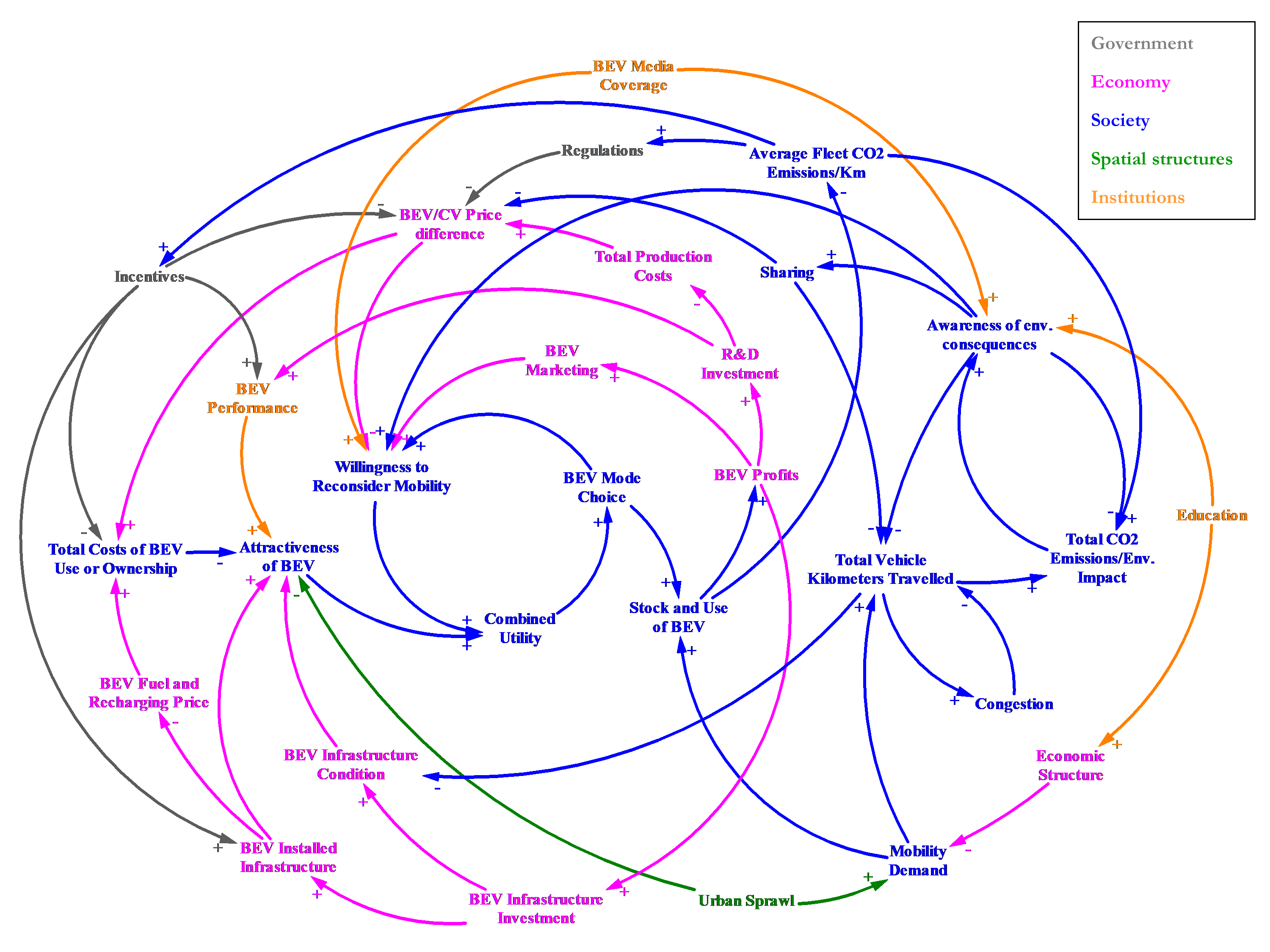The current Swiss transportation system is still far from climate neutral. In order to accelerate the transformation to a sustainable and carbon-neutral mobility system, we propose an overview of system agents and their interactions to better understand the current trends and dynamic behavior of policy interventions. As such, we identified five core agents as the government, economy, society, spatial structures and institutions through a set of semi-structured expert interviews. By utilizing concept maps and causal loop diagrams we further integrated subcomponents of each agent into a holistic and connected framework, enabling the qualitative assessment of feedback loops. We use the example of battery electric vehicles and evaluate policy measures and trends on their potential impact on adoption and CO2 emissions.
The following figure displays these interactions within a Causal Loop Diagram (CLD), which has been drawn with the software Vensim.
These CLD brings our mental models to paper and helps structuring thought processes as well as simplify the complexity of real systems to the most important parameter.
Within this diagram, various important feedback loops are present, most notably the reinforcing effect of financial incentives by the government and investment into marketing and infrastructure by the economy. The society’s choice of mode strongly depends on these actions as well as on the increasing willingness to reconsider mobility through increasing customer base of sustainable mode options. Institutions, the like of media and research associations, also shape the perception of the respective mode and thus willingness to reconsider ones mobility. Education, which falls under the institutional agent, could accelerate the transformation through increasing the awareness of environmental consequences as well as new and sustainable working structures (e.g. home office, mobility management within companies). Lastly, the ongoing trend of urbanisation increases mobility demand yet offers the possibility to adopt more sustainable mode options like electric cars that have favourable conditions in dense areas as opposed to conventional fossil-fuel based cars.
The work has been described in detail within our working paper that will be available soon – stay tuned!


